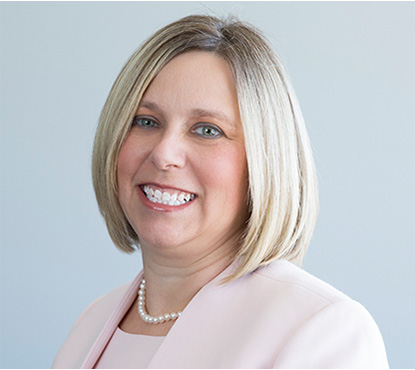


Member of Russell Bedford International, a global network of independent professional service firms.

Tax Supervisor – SALT
For tax years beginning January 1, 2024 there are big changes to the Ohio Commercial Activity Tax (“CAT”). For one thing, the CAT annual minimum tax is being eliminated. More importantly, the receipts exclusion is increased from $1 million to $3 million for 2024 and will be increased to $6 million for 2025. Taxpayers having 2024 calendar year Ohio gross receipts of $3 million or less will no longer be subject to the CAT. The CAT rate remains unchanged at 0.26% and will apply to Ohio gross receipts in excess of $3 million.
What does this mean for your business? If you expect your 2024 Ohio gross receipts to be under $3 million, you must close your CAT account. Failure to close the account could result in non-filing notices. You may close the CAT account online by visiting the Ohio Business Gateway. Select the CAT Cancel Account transaction and indicate a closure date of December 31, 2023.
Remember to file your final CAT return for tax year 2023! CAT filing deadlines are:
Ohio is just one of many states that imposes a tax on gross receipts. Cray Kaiser can help your business evaluate the impact of these types of taxes on your business. Contact us by calling 630-953-4900 and one of our State and Local Tax professionals will be happy to provide assistance.
We are pleased to announce Deanna Salo, Managing Principal at Cray Kaiser has been named a 2024 Chicago Titan 100. The Titan 100 program recognizes Chicago’s Top 100 CEO’s & C-level executives. They are the area’s most accomplished business leaders in their industry using criteria that includes demonstrating exceptional leadership, vision, and passion. Collectively, the 2024 Chicago Titan 100 and their companies employ upwards of 325,000 individuals and generate over 42 Billion dollars in annual revenues.
“The Titan 100 are visionary leaders that inspire the Chicago business community. These preeminent leaders have built a distinguished reputation that is unrivaled and preeminent in their field. We are humbled to recognize the Titan 100 for their efforts to shape the future of the Chicago business community” says Jaime Zawmon, President of Titan CEO.
Deanna has been a CK Principal since 2001 and a Managing Principal since 2021. She executes assurance, strategic and tax planning services across the client portfolio. For closely-held and family-owned businesses, she focuses on the value she can bring to the family and owners. For nonprofit clients, she instills best practices in budgeting, governance issues and audit compliance procedures. Using her technical and creative talents, Deanna also performs M&A engagements for the buyer and seller sides.
When asked her thoughts about becoming a 2024 Chicago Titan 100, Deanna responded, “Success is not just about achieving personal goals; the Cray Kaiser way is to inspire and uplift others along the way. As a Chicago Titan 100 recipient, I believe in the power of collaboration, innovation, and a relentless pursuit of excellence. Together, we can shape the future and leave a lasting impact on our community and beyond.”
In Cray Kaiser’s Employee Spotlight series, we highlight a member of the CK team. We couldn’t be prouder of the team we’ve grown and we’re excited for you to get to know them. This month we’re shining our spotlight on Jacob Suchecki.
GETTING TO KNOW JACOB
No day at CK is ever the same for Jacob in his role as Staff Accountant. His day is centered around conducting financial audits and providing assurance to clients. Whether he is audit planning, conducting data analysis or testing to ensure compliance with accounting standards, Jacob’s expertise of attention to detail shines through.
Jacob started his journey at CK as an intern in February and joined the team full-time in May. He was immediately drawn to the dynamic and collaborative work environment. The CK team’s commitment to professional development, team-oriented culture, and the opportunity to gain valuable experience were all key factors that fueled his excitement to join the company.
WHY CK?
When asked which core value means the most, Jacob answered, “Integrity. While all the values are important, integrity aligns with the ethical standards and professional conduct which is important to the accounting and assurance field and remains a fundamental part of my role.” Jacob continued, “In order to keep client connections and guarantee the accuracy and dependability of financial information, it is crucial to value integrity which includes honesty, ethics, and transparency.”
Jacob enjoys his role at CK and remains at the company because of the support he receives for his professional growth and the strong ethical standards CK upholds. He also appreciates the opportunities to work with diverse clients from various industries, which keeps his job interesting.
Before CK, Jacob received his bachelor’s degree in accounting from Saint Xavier University. While pursuing his degree, he interned for a small accounting firm that allowed him to experience the accounting field. He plans to continue his education and pursue his CPA.
When asked about a piece of advice he would give to someone just getting started in the accounting industry, Jacob answered, “As someone who is just starting in the industry, I would advise focusing on education, staying up to date on industry changes, and honing the skill of paying attention to detail. Developing strong communication skills to build professional connections by networking and applying to internships is how I was able to land an internship at CK.” He continued, “Finally, setting clear career goals and committing to lifelong learning will help you succeed and thrive in the accounting field.”
Jacob’s favorite CK group outing was when they participated in a golf outing in August. The outing was the perfect opportunity for team building, relaxing, and stress relief. It also provided a great space for networking with colleagues. The outing contributed to a more cohesive and enjoyable work environment, making it a memorable experience.
MORE ABOUT JACOB
Tell us about your family.
My parents both came from Poland when they were teenagers. I have two younger brothers who are 19 and 17. My family is a big fan of soccer and golf.
Do you have a special/hidden talent or hobby?
The hobby I love doing is golf. Being outdoors for 4-5 hours with family and friends is what I love most about golf.
What is your favorite vacation? Or what is the #1 place on your vacation list?
The #1 place on my vacation list is to travel to anywhere in Europe. My plan would be to backpack throughout Europe and get to experience every country. Since I am big soccer fan, I would also love to go experience a game in Europe.
What’s the last book you read?
The last book I read was ‘Rich Dad Poor Dad’ by Robert Kiyosaki. The book provided valuable insights on financial literacy and investments, emphasizing the importance of financial education.

In-Charge Staff Accountant
As the end of the year approaches, a lot of us take time to look back at the past year and plan for the year ahead. Now is the time to look for new opportunities, plan for the future, and take steps to avoid surprises.
Teaming up with your advisor to put together a year-end tax projection is a good idea that’s worth making time for. A tax projection is essentially an estimated tax return that will use a combination of information you already know and estimates of things you can’t know until the year is over to form a rough idea of what to expect come tax time. No projection will be perfect, especially in recent years when tax laws have changed so frequently and drastically. But starting with a good projection can eliminate at least some unknowns. In the words of Gen. Dwight D. Eisenhower, “Plans are useless, but planning is indispensable.”
Unpleasant surprises often come in the form of a higher-than-expected amount of tax due with your return, and a year-end projection can help avoid this. In many cases, an extra year-end estimated payment might be a good idea, since it can help ensure timely payment and avoid incurring penalties or interest that the government might add on to your balance due.
In addition, a year-end tax projection can often help you and your advisor uncover opportunities for additional tax savings. For many people, this might come in the form of maximizing contributions to retirement savings accounts, health savings accounts, or education savings accounts. It can also aid in the planning of charitable giving.
Beyond that, a year-end projection can aid in planning for future savings, as well. For business owners, conducting a projection can help in evaluating timing decisions for major investments in equipment or other aspects of their businesses. The same activity might have different tax consequences if it takes place before or after the current year ends. Certain deductions and credits for individuals have annual limits, as well. Some of these are fixed and other limits have a sliding scale based on your adjusted gross income (AGI) as calculated on your tax return. A tax projection can show whether the benefit will be greater in the current year or in a future year.
Of course, a projection is just an estimate, and there will be uncertainties involved. But a year-end projection can help put you in the best position to step into the year ahead. For assistance with completing your year-end tax projection, please contact the tax experts at CK at 630-953-4900.

CPA | Tax Supervisor
Cryptocurrency is relatively established with 17% of Americans using it, but the regulations on tax reporting are still in the infancy stage.
The Treasury Department has proposed a new Form 1099-DA to modernize reporting requirements related to cryptocurrency. It would result in an easier way to determine the transactions that result in a taxable event and gives crypto users a clearer answer regarding taxation around cryptocurrency. While the form is new, the rationale aligns with what Congress adopted in 2021 with the passage of the Infrastructure Investment and Jobs Act (IRA).
The current system in place is a hodgepodge of rules, with part of it being based on the honor system. The proposed 1099-DA would require brokers to annually report the sales and exchanges of digital assets to both the IRS and the taxpayer, similar to how the sale of securities is reported. As such, the learning curve is low as most taxpayers are used to the reporting regime related to the sale of stocks, bonds, and mutual funds.
This Proposal gives a clearer definition of who brokers are and will encompass both traditional brokers (i.e. Morgan Stanley) and new entrants (i.e. Coinbase). It includes both centralized and decentralized trading platforms, crypto payment processors and online applications that store digital assets, such as Bitcoin, Ethereum and NFTs.
The government is catching up to the nascent crypto world and trying to bring order and consistency to the taxation of digital assets. Currently, the IRS is waiting to hear feedback until October 30, and once fine-tuned, implementation would occur for the 2025 tax year, giving the industry two years to get systems and best practices in compliance.
While any change, especially tax changes, can cause anxiety, Cray Kaiser is here to help you navigate potential pitfalls and opportunities. Please call us today at 630-953-4900.
Although you can’t avoid taxes, you can take steps to minimize them. This requires proactive tax planning – estimating your tax liability, looking for ways to reduce it and taking timely action. To help you identify strategies that might work for you, we’re pleased to present the 2023 – 2024 Tax Planning Guide.

Manager of Accounting Services
As small business owners continue to look for ways to cut costs in response to pressures from economic uncertainty such as rising interest rates, employee retention and inflation, one solution may be Accounts Payable (AP) automation. AP automation once reserved for larger companies has now found its home in many medium to small sized companies.
Is your company still manually recording vendor invoices, printing, and mailing checks? You will want to read our case study below to see how AP automation helped one of our clients. It may be a good fit for you too.
Small to mid-size businesses are now able to automate AP through apps such as BILL.com which also integrates with leading accounting software solutions such as QuickBooks, Sage Intacct, Xero and Netsuite.
We recently assisted a midsized client who had a dedicated employee that spent 30 hours a week manually recording vendor invoices, printing out checks, stapling checks to invoices, handing them over to owners to review and sign, mailing payments and then dealing with all the paper documents. If this does not sound exhausting enough, to add to the complexity some vendors were set up on auto pay, which required the employee to take additional steps to manage cash flow. Sound familiar?
When we first proposed Bill.com to our client, they expressed valid concerns such as security issues with electronic payments, how would Bill.com handle vendors who only accept paper checks, subscription costs, etc. We scheduled a meeting with both our client and a Bill.com representative where the client was able to not only view a demo, but also address their concerns and questions. Needless to say, the client was on board and eager to begin.
From there, we provided our client with a detailed timeline of events which included steps they needed to take to prepare for Bill.com setup within their QBO file such as vendor cleanup, determination of approval levels, etc, scheduled integration and implementation training. This process took two weeks.
Bill.com has transformed the way our client processes invoices. All vendor invoices are sent to the company’s centralized inbox in BILL.com, so that it goes through the automated approval process. The owner who lives out of state approves bills that are to be paid, using his mobile app!! BILL.com automatically sends the team email reminders about upcoming or overdue bills and lets them pull up payment statuses and view invoices in just a few clicks. No more frantically tracking down invoices.
BILL.com’s two-way sync with QuickBooks Online provides a seamless integration which minimizes the need for double data entry in both systems and the risk of error that could occur. The AP employee now only spends about 2-3 hours weekly with AP, or 30 minutes a day. Allowing our client to better utilize the employee’s time on other projects. The Bill.com integration took less than 1 month from the initial call to full implementation.
If you are interested in learning more about AP automation for your company, please contact the experts at Cray Kaiser at (630) 953-4900 to schedule a consultation.
In Cray Kaiser’s Employee Spotlight series, we highlight a member of the CK team. We couldn’t be prouder of the team we’ve grown and we’re excited for you to get to know them. This month we’re shining our spotlight on Daniel Jacobson.
Daniel is a Senior Accountant in the assurance department. His role includes serving as lead on audits, reviews and compilations. A typical day for Daniel consists of performing audit tests or analytical procedures for engagements.
Daniel joined CK in October of 2022. He was immediately drawn to the amazing group of people who work at the firm, the values of CK, and the great work environment. The mentors he has had the opportunity to work with and learn from and the friendly atmosphere of the firm are two major things that excite him about CK.
When asked which of CK’s core values mean the most, Daniel answered, “Integrity is the most important core value to me because it is important to provide our clients accurate and honest assessments through our work and actions.”
Before CK, Daniel graduated from Northwestern University as a history major. During his time as an undergraduate, he started taking accounting courses which he found enjoyable. After graduation, Daniel began working in a variety of positions in the accounting field. He attended night classes to earn his CPA and passed the final CPA exam in May 2015. He has been working with public accounting firms since January of 2016, including Baker Tilly, Jesser, Ravid, Jason, Basso & Farber, and Picker & Associates.
When asked about an impactful moment in his career, Daniel answered, “I have an unusual path for a public accountant. I did not major in accounting or have an internship with a CPA firm. Studying towards my CPA and spending my own money on classes, review courses, and tests is the greatest accomplishment in my career.”
What motto do you live by?
Be open to new experiences and perspectives.
How do you like to spend your weekends/time off? Bonus question: what do you want to do most when tax season is over?
I enjoy spending my free time with friends and family. You can usually find me dining out or at the movies. After tax season is over, I like to take a long vacation, usually somewhere overseas.
Do you have a special/hidden talent or hobby?
I’m great at trivia; particularly sports, movies, tv, and music.
What’s the last book you read?
Killers of the Flower Moon.

CK Principal
Many small businesses have received refunds by claiming the Employee Retention Credit (ERC) which had expanded opportunities under the Consolidated Appropriations Act of 2021 and the American Rescue Plan Act of 2021. If you have not yet claimed the ERC, time will be running out soon and you will want to check the availability for this payroll credit before it is too late. To qualify for the ERC, you will want to review our blog.
As a reminder, the ERC is claimed by filing an amended payroll tax return for the quarter in which you qualified. The IRS regulations require amended payroll tax forms to be filed by the later of the following:
However, the IRS considers Form 941 for a calendar year as filed on April 15 of the succeeding year as long as the original 941 was filed by this date. This consideration by the IRS is allowing you to still claim the ERC for calendar quarters in 2020 up to April 15, 2024 and for calendar quarters in 2021 up to April 15, 2025.
While the ERC offers an opportunity for significant refunds, it is important for you to confirm your eligibility before claiming the credit. There is increased scrutiny on companies trying to fraudulently solicit claims related to ERC. In response to rising concerns of fraudulent claims for ERC, the IRS recently ordered an immediate moratorium on processing new ERC claims through at least December 31, 2023. The IRS will continue to process ERC claims received prior to the moratorium however processing times are expanding due to the fraud concerns and the increased review time needed for the claims.
We are available to assist you in determining your qualifications and the preparation of the associated amended payroll tax returns. Please contact Cray Kaiser at (630) 953-4900 for additional information.

In-Charge Tax Accountant
When I was beginning my journey to become an accountant, I had the opportunity to intern at Cray Kaiser and KPMG. These internship experiences allowed me multiple opportunities when deciding on my post-graduation employment. In the first semester of my senior year, I signed and accepted an offer to join the CK team where I currently work full-time. It is essential to take the initiative to take as many internships as possible. Taking a proactive approach allows you ample time to secure a spot, as many firms tend to fill up a year in advance.
Working full-time at Cray Kaiser was a smooth transition. I was getting exposed to so much as an intern that I felt prepared to advance into the next step. What was an adjustment for me was not going to school while working. Now with my extra time, I use it to focus on my career goals. One career goal for me is studying for the CPA exam.
If you plan to pursue the CPA exam, I recommend the Becker program. The software is easy to use, provides printed material, and is always on sale (there is usually a better sale around the holidays). They also have a fantastic planning system. You enter when you want to take the exam, and it will tell you how many hours you need to study, or you can tell Becker how many hours you can study, and it will give you a custom plan for what days to study, what to study, etc. The program makes you feel less overwhelmed when you are deciding when, what, and how long you should study.
In any career, I think it’s important to make sure you enjoy what you are doing. In the accounting profession, everyone always asks if you are interested in audit or tax. Without experience in both fields, how does one know? Two solutions I found to this are to have internships in both areas or work at a smaller firm where you can assist in both areas.
I love working on complex tax returns and was thrilled to join the tax department. However, I still am allotted the opportunity to work with the assurance team and build on those skills too.
One skill I have built is being a self-advocate and letting management know what areas interest me and where I would like to see my skills grow. Remember that no one can read your mind. You will need to speak up to management to tell them the areas you find most interesting to work in. My goal is to enjoy what I do and make a difference to the organization I work for and the clients we serve. I have found at Cray Kaiser, we aren’t just tax preparers and auditors we are trusted business advisors who are going to help all the family-owned businesses we serve.